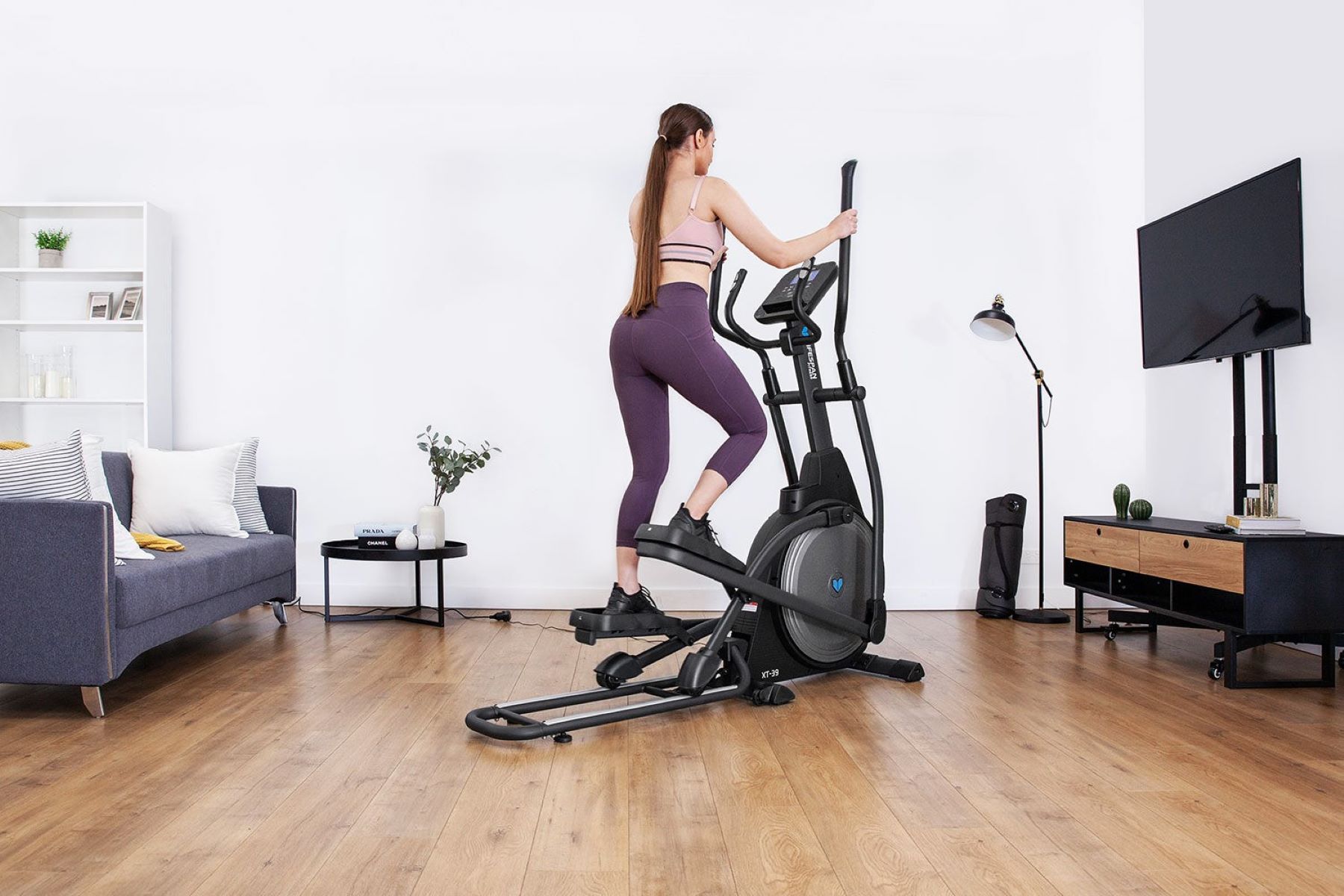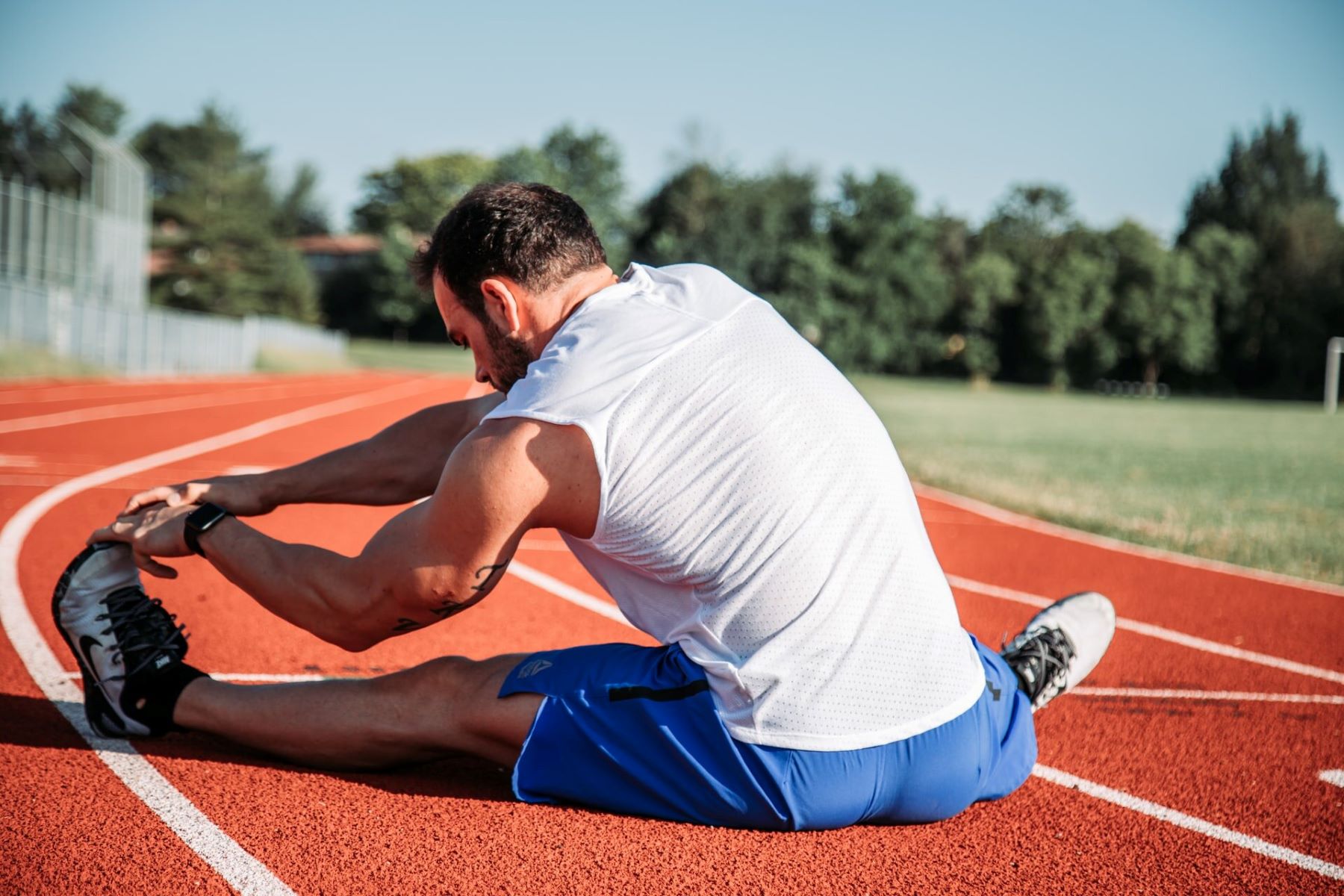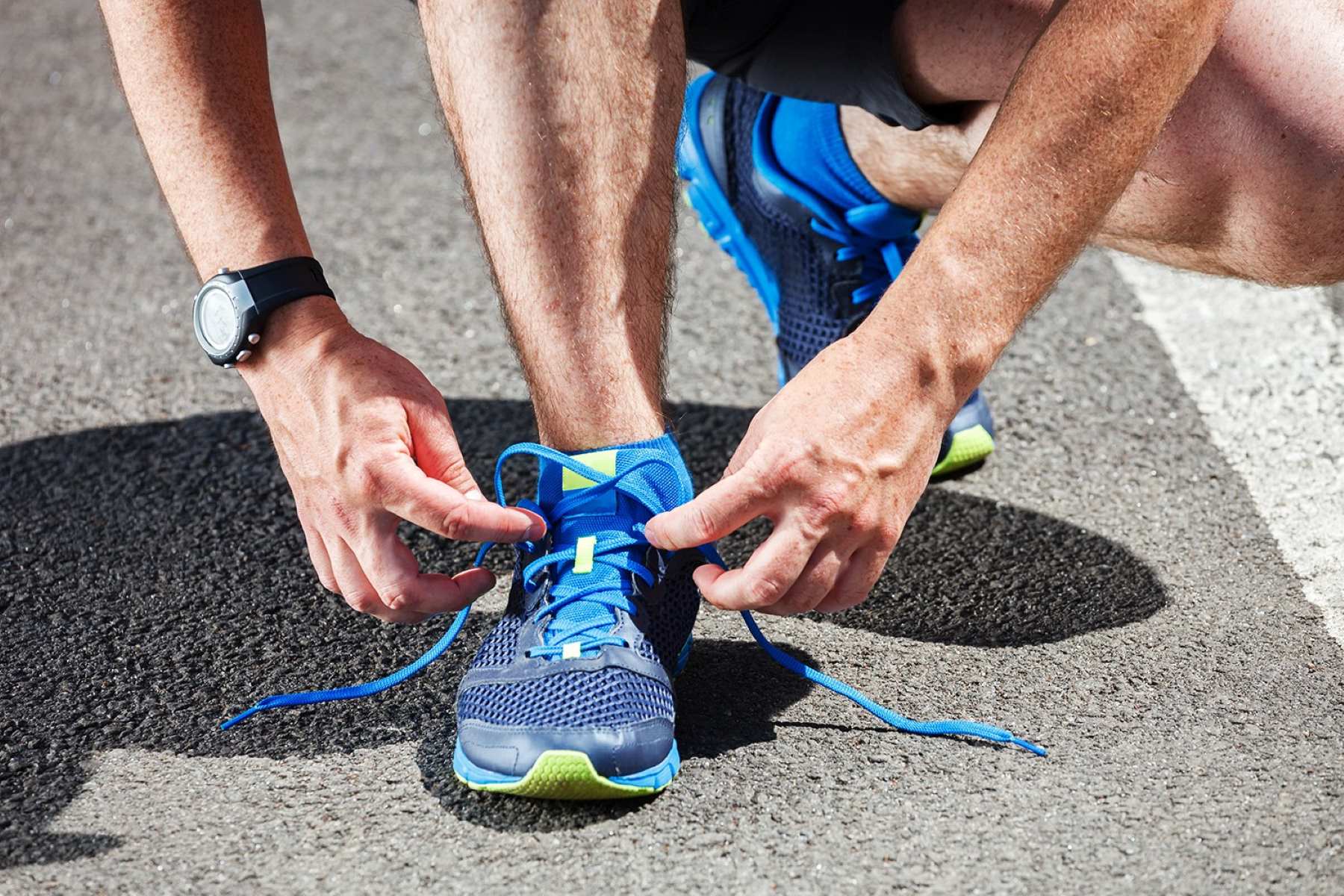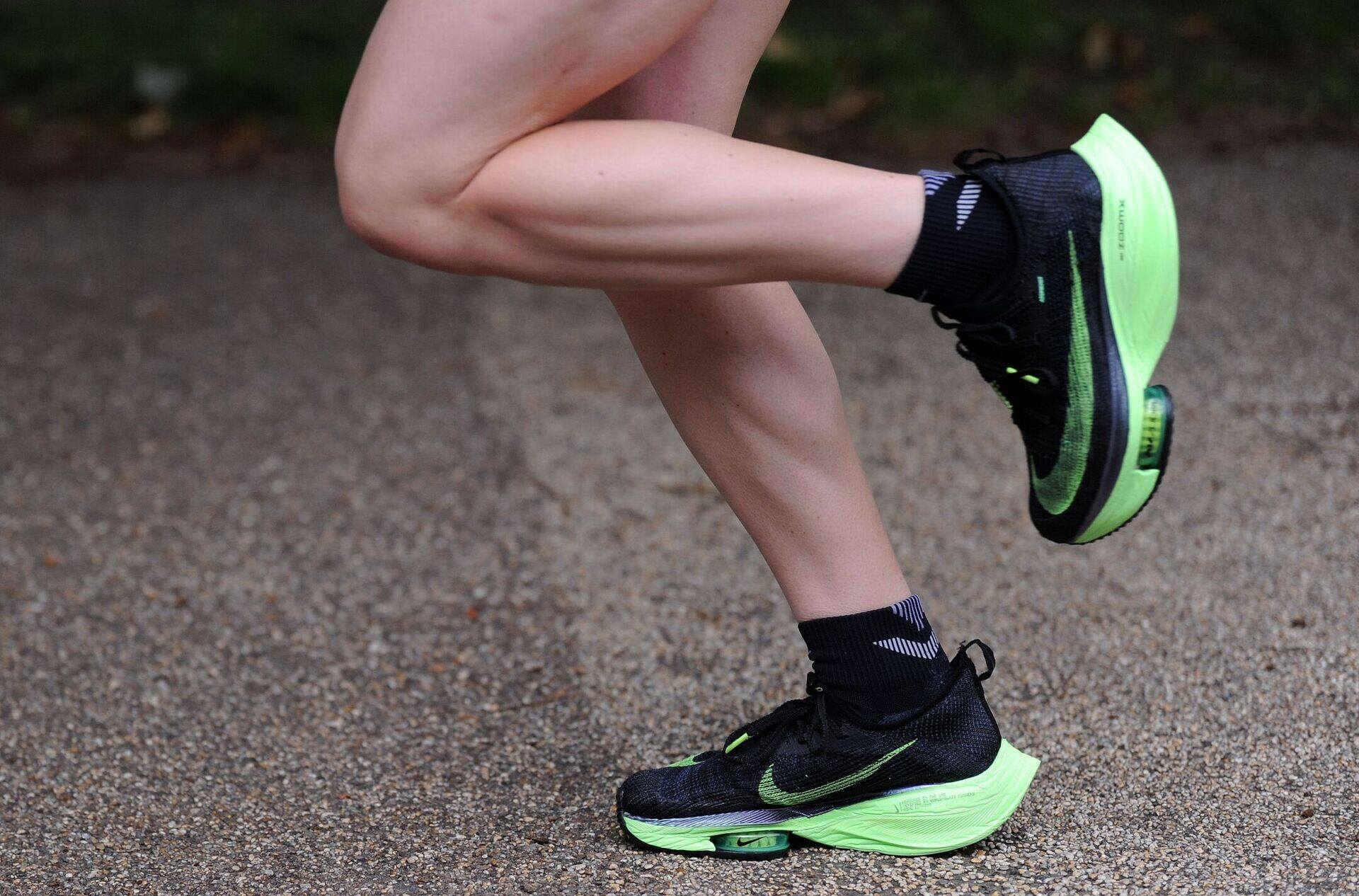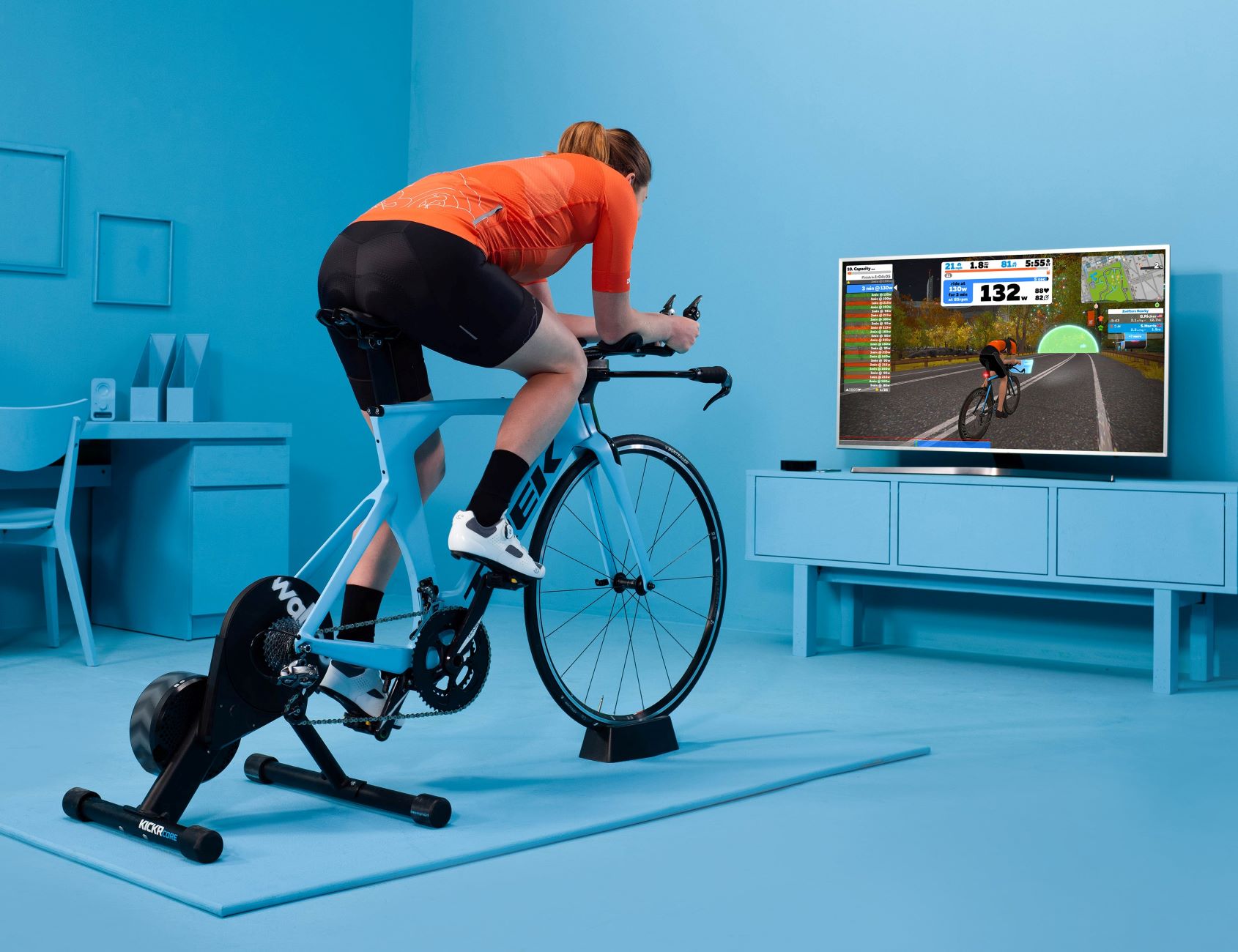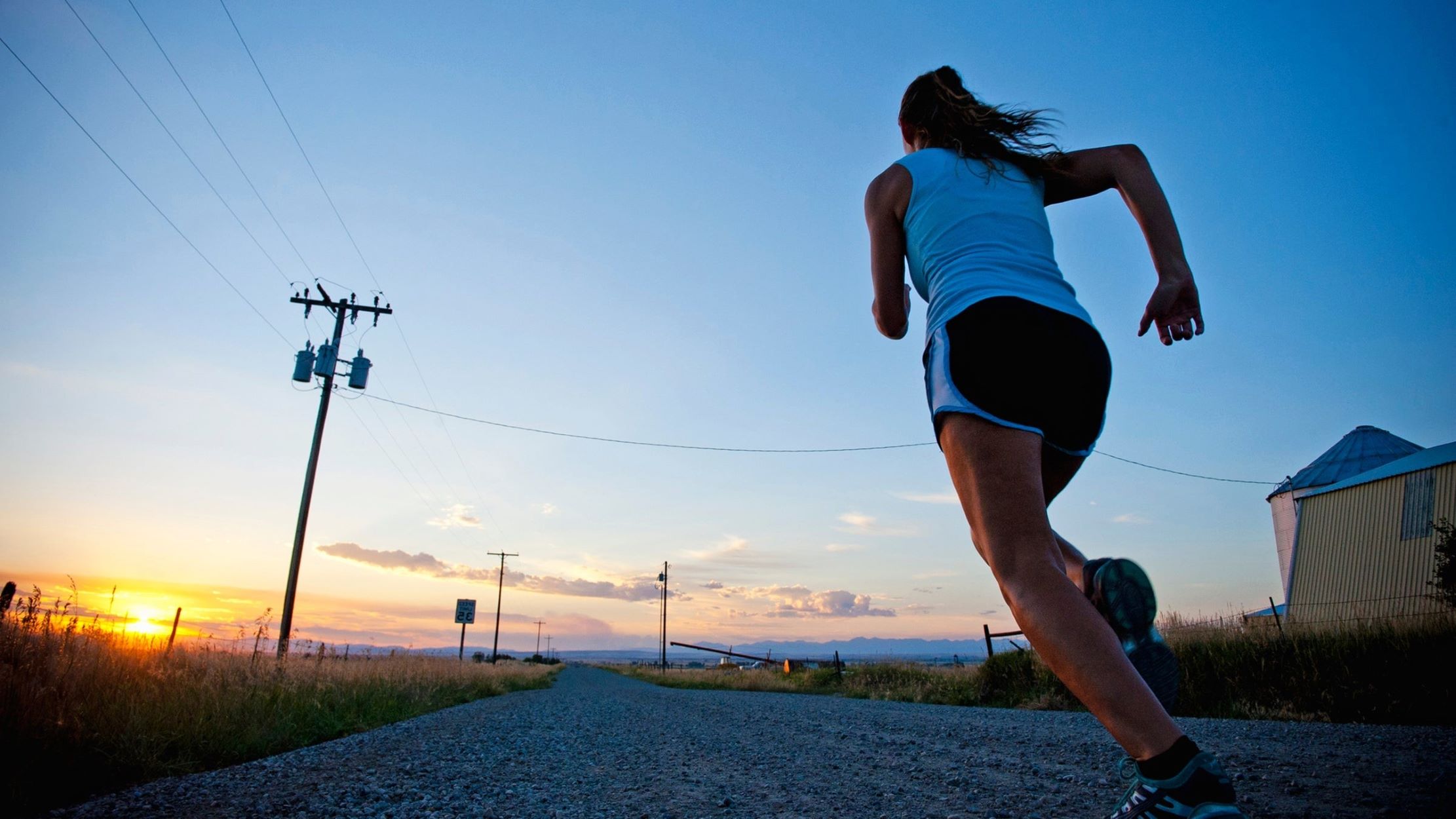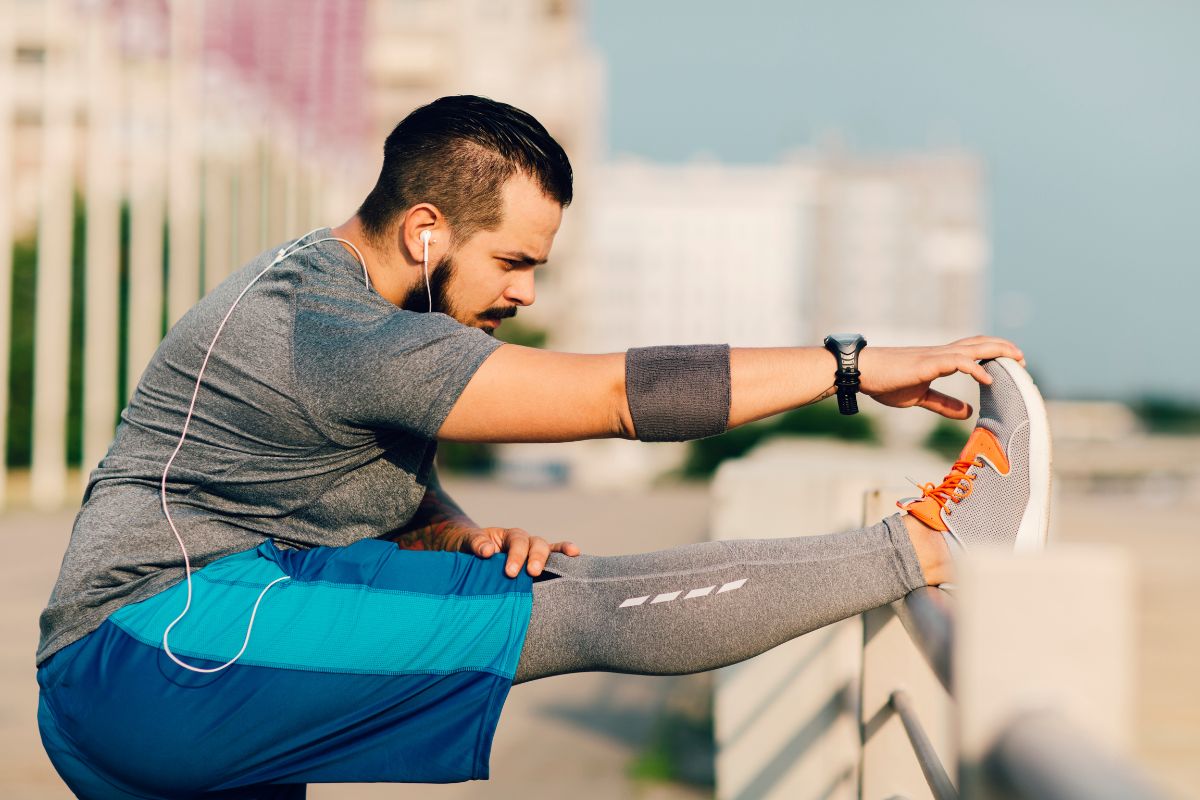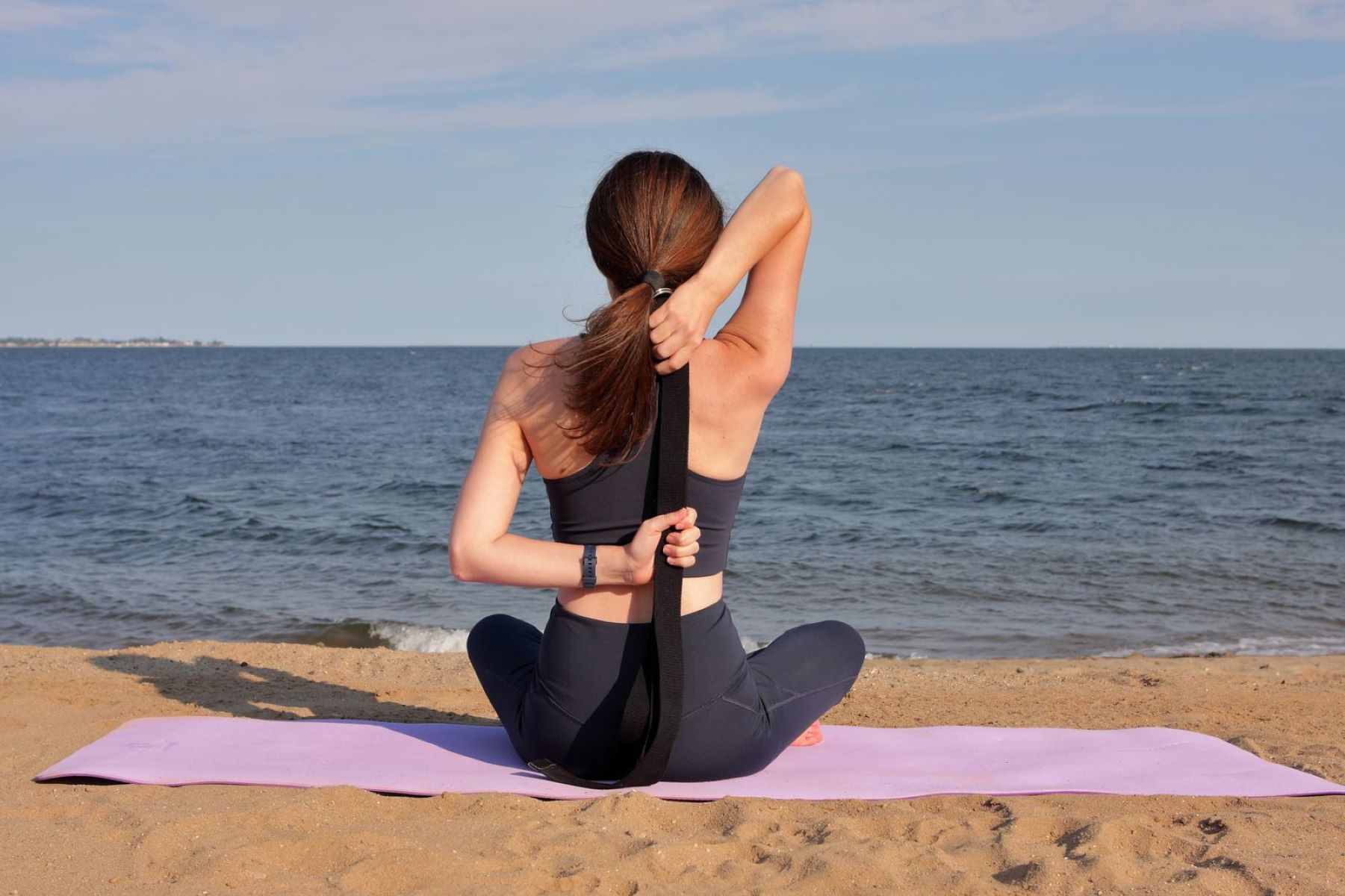Home>Health & Nutrition>Why Runners Should Consider Trying Hot Yoga
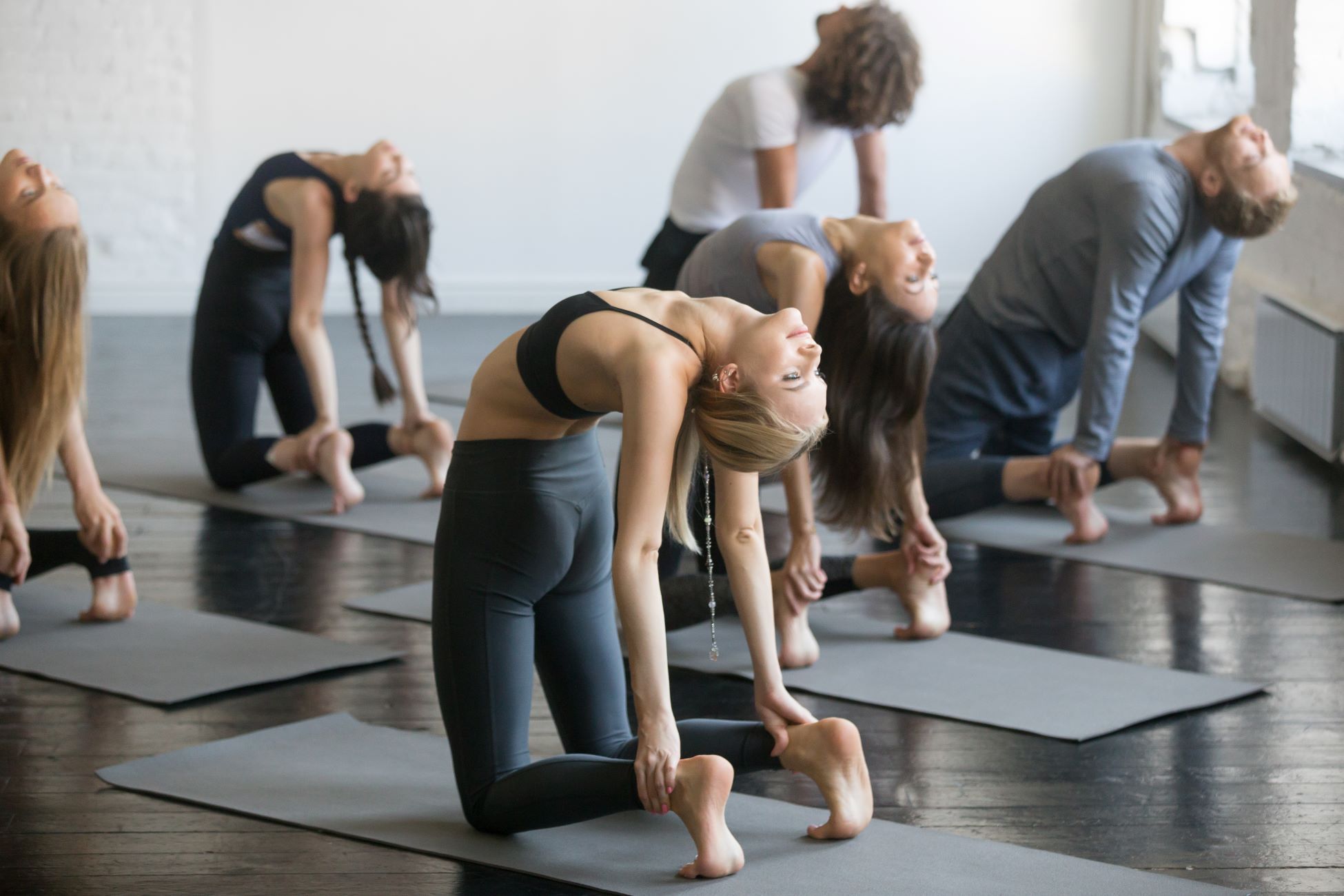

Health & Nutrition
Why Runners Should Consider Trying Hot Yoga
Published: February 21, 2024
Discover the benefits of hot yoga for runners and how it can improve health and nutrition. Learn why incorporating hot yoga into your routine can enhance your overall well-being.
(Many of the links in this article redirect to a specific reviewed product. Your purchase of these products through affiliate links helps to generate commission for Therunningadvisor.com, at no extra cost. Learn more)
Table of Contents
The Benefits of Hot Yoga for Runners
Hot yoga offers a myriad of advantages for runners, making it a valuable addition to their training regimen. The combination of yoga poses in a heated room provides unique benefits that can significantly enhance a runner's performance and overall well-being.
-
Enhanced Flexibility: The high temperature in hot yoga studios allows for deeper stretching, promoting increased flexibility in muscles and joints. This is particularly beneficial for runners, as improved flexibility can help prevent injuries and muscle strains, ultimately enhancing running performance.
-
Improved Strength and Endurance: Hot yoga poses, such as Warrior and Chair poses, engage various muscle groups, leading to improved strength and endurance. These physical benefits directly translate to enhanced running capabilities, allowing runners to maintain proper form and stride even during long-distance runs.
-
Enhanced Mental Focus: The meditative aspect of hot yoga cultivates mental focus and concentration, which are essential for runners during races and training. By practicing mindfulness and deep breathing in a heated environment, runners can develop mental resilience and clarity, enabling them to push through physical challenges with greater ease.
-
Detoxification and Stress Relief: The profuse sweating induced by hot yoga helps rid the body of toxins and impurities, promoting overall detoxification. Additionally, the heat and intensity of the practice can alleviate stress and tension, providing runners with a valuable opportunity to unwind and relax, ultimately contributing to improved mental and physical well-being.
-
Injury Prevention and Recovery: Hot yoga can aid in injury prevention and expedite recovery for runners. The combination of heat and stretching helps increase blood circulation, promoting faster healing of micro-tears in muscles and reducing post-run soreness.
Incorporating hot yoga into a runner's training routine can yield remarkable benefits, contributing to improved performance, injury prevention, and overall well-being. As runners strive to achieve their fitness goals, the integration of hot yoga can serve as a valuable tool in their pursuit of excellence.
How Hot Yoga Can Improve Running Performance
Hot yoga, with its unique blend of physical and mental benefits, has the potential to significantly enhance a runner's performance. The practice of hot yoga in a heated environment offers a range of advantages that directly translate to improved running capabilities.
Enhanced Flexibility and Range of Motion
The high temperature in hot yoga studios facilitates deeper stretching, allowing runners to achieve greater flexibility in their muscles and joints. This increased flexibility is particularly advantageous for runners, as it can help prevent injuries and muscle strains. By incorporating hot yoga into their routine, runners can experience improved range of motion, enabling them to move more freely and efficiently during their runs.
Strengthening Muscles and Endurance
Hot yoga poses, such as the Warrior and Chair poses, engage various muscle groups, leading to enhanced strength and endurance. These physical benefits directly contribute to improved running performance, as strengthened muscles and increased endurance enable runners to maintain proper form and stride, particularly during long-distance runs. The incorporation of hot yoga into a runner's training regimen can effectively complement their existing strength and conditioning efforts, resulting in a more robust and resilient musculoskeletal system.
Mental Focus and Resilience
The meditative aspect of hot yoga cultivates mental focus and concentration, essential attributes for runners during races and training. By practicing mindfulness and deep breathing in a heated environment, runners can develop mental resilience and clarity, enabling them to push through physical challenges with greater ease. The ability to maintain mental focus during runs is crucial for optimizing performance and overcoming obstacles, making hot yoga a valuable tool for honing mental fortitude.
Detoxification and Stress Relief
The intense heat and physical exertion in hot yoga classes induce profuse sweating, facilitating the release of toxins and impurities from the body. This detoxification process can be particularly beneficial for runners, as it helps eliminate metabolic waste and environmental pollutants that may hinder optimal performance. Additionally, the practice of hot yoga provides a valuable opportunity for stress relief, allowing runners to unwind and alleviate mental tension. The combination of detoxification and stress reduction contributes to an overall sense of well-being, which can positively impact a runner's performance on the track or trail.
Injury Prevention and Recovery
Hot yoga can play a pivotal role in injury prevention and expedited recovery for runners. The combination of heat and stretching in hot yoga classes promotes increased blood circulation, facilitating faster healing of micro-tears in muscles and reducing post-run soreness. By integrating hot yoga into their routine, runners can proactively address potential areas of tightness and imbalance, thereby reducing the risk of overuse injuries and promoting quicker recovery from intense training sessions.
Incorporating hot yoga into a runner's training regimen can yield remarkable benefits, contributing to enhanced flexibility, strength, mental focus, and overall well-being. By leveraging the unique advantages of hot yoga, runners can optimize their performance and elevate their running experience to new heights.
Tips for Incorporating Hot Yoga into Your Running Routine
Incorporating hot yoga into a running routine can be a transformative addition, enhancing physical performance, mental resilience, and overall well-being. To seamlessly integrate hot yoga into a runner's training regimen, several practical tips can be immensely beneficial:
1. Gradual Integration
Begin by gradually incorporating hot yoga sessions into the weekly training schedule. Start with one or two sessions per week to allow the body to adapt to the heat and intensity of the practice. As the body acclimates, gradually increase the frequency of hot yoga sessions to maximize the benefits while minimizing the risk of overexertion.
Read more: Why You Should Give Track Running A Shot
2. Strategic Scheduling
Strategically schedule hot yoga sessions to complement running workouts. Consider incorporating hot yoga on rest days or as a form of active recovery following intense training sessions. This strategic approach allows runners to leverage the restorative benefits of hot yoga while optimizing recovery between runs.
3. Mindful Hydration
Prioritize hydration before, during, and after hot yoga sessions. The profuse sweating during hot yoga can lead to significant fluid loss, making it essential for runners to maintain optimal hydration levels. By being mindful of hydration, runners can support their body's ability to adapt to the heat and minimize the risk of dehydration.
4. Focus on Breath Awareness
Emphasize breath awareness during hot yoga practice to enhance respiratory efficiency and mental focus. Integrating deep, controlled breathing techniques from hot yoga into running can improve oxygen utilization, reduce perceived exertion, and promote a sense of calm during challenging runs.
5. Cross-Training Synergy
View hot yoga as a complementary form of cross-training that augments running performance. The balance, flexibility, and strength developed through hot yoga can directly benefit a runner's musculoskeletal health, providing a holistic approach to physical conditioning and injury prevention.
6. Post-Yoga Recovery
Following hot yoga sessions, prioritize post-practice recovery to optimize the body's adaptation and healing processes. Incorporate gentle stretching, foam rolling, and adequate rest to support muscle recovery and minimize post-yoga soreness, ensuring a seamless transition back into running workouts.
7. Mind-Body Integration
Embrace the mind-body connection fostered by hot yoga and integrate the mental resilience cultivated during practice into running. Utilize the mental clarity, focus, and stress-reducing techniques from hot yoga to enhance running performance and promote a balanced approach to training.
By implementing these practical tips, runners can seamlessly integrate hot yoga into their training routine, unlocking the transformative benefits of this dynamic practice while enhancing their overall running experience.
Precautions and Considerations for Runners Trying Hot Yoga
When incorporating hot yoga into their training regimen, runners should be mindful of several precautions and considerations to ensure a safe and effective integration of this dynamic practice. While hot yoga offers numerous benefits, it is essential for runners to approach it with a thoughtful and informed mindset to mitigate potential risks and optimize their experience.
1. Hydration and Electrolyte Balance
The intense heat and profuse sweating experienced during hot yoga sessions can lead to significant fluid loss and electrolyte depletion. Runners should prioritize adequate hydration before, during, and after hot yoga practice to maintain optimal fluid balance and support the body's thermoregulatory mechanisms. Additionally, replenishing electrolytes, such as sodium and potassium, can help prevent dehydration and minimize the risk of muscle cramps.
Read more: Quick Yoga Poses For Busy Runners
2. Heat Adaptation
Runners new to hot yoga should allow their bodies time to acclimate to the elevated temperature of the studio. It is advisable to start with shorter sessions and gradually increase the duration as the body becomes accustomed to the heat. By allowing for a gradual adaptation process, runners can minimize the risk of heat-related discomfort or exhaustion.
3. Listening to the Body
During hot yoga sessions, runners should attentively listen to their bodies and respect their physical limits. The combination of heat and challenging yoga poses can place additional stress on the muscles and cardiovascular system. It is crucial for runners to practice self-awareness and modify poses or take breaks as needed to prevent overexertion and reduce the risk of injury.
4. Proper Nutrition
Maintaining proper nutrition is essential for runners engaging in hot yoga. Adequate fueling before and after hot yoga sessions can support energy levels and aid in muscle recovery. It is important to consume a balanced meal or snack containing carbohydrates, protein, and healthy fats to replenish energy stores and facilitate post-practice recovery.
5. Clothing and Equipment
Choosing appropriate clothing and equipment is vital for a comfortable and safe hot yoga experience. Breathable, moisture-wicking attire can help manage sweat and body temperature, while a non-slip yoga mat provides stability during poses. Additionally, bringing a towel and staying equipped with a water bottle are essential for maintaining comfort and hydration throughout the practice.
Read more: Yoga Flow For Runners: Post-Run Recovery
6. Pre-existing Health Conditions
Runners with pre-existing health conditions, such as cardiovascular issues, respiratory ailments, or musculoskeletal injuries, should consult with a healthcare professional before embarking on hot yoga practice. Understanding any potential contraindications and receiving personalized guidance can help ensure that hot yoga is compatible with individual health needs and goals.
By conscientiously considering these precautions and factors, runners can approach hot yoga with confidence and mindfulness, optimizing the integration of this transformative practice into their training routine while prioritizing their well-being and safety.
Finding the Right Hot Yoga Studio for Runners
Selecting the ideal hot yoga studio is a pivotal step for runners seeking to integrate this transformative practice into their training regimen. The following considerations can guide runners in finding a hot yoga studio that aligns with their specific needs and complements their running routine.
Location and Accessibility
When seeking a hot yoga studio, proximity and accessibility are key factors to consider. Opting for a studio located near home, work, or running routes can facilitate consistent attendance and seamless integration into a runner's schedule. Additionally, convenient access to the studio can minimize logistical barriers, making it easier for runners to prioritize their hot yoga practice alongside their running commitments.
Class Schedule and Variety
The availability of classes and the diversity of offerings play a crucial role in accommodating runners' schedules and preferences. Look for a hot yoga studio that offers a range of class times, including early morning and evening sessions, to accommodate varying training schedules. Furthermore, a diverse selection of class types, such as vinyasa, power yoga, and restorative yoga, can cater to runners' specific needs, whether they seek dynamic cross-training or restorative recovery sessions.
Experienced Instructors
The expertise and guidance of instructors significantly impact the quality of the hot yoga experience. Seek out a studio with experienced instructors who possess a deep understanding of yoga, anatomy, and alignment. For runners, instructors who can offer modifications and insights tailored to the needs of athletes can enhance the relevance and effectiveness of the practice, ensuring that it complements their running goals and addresses any specific areas of focus, such as flexibility, strength, and injury prevention.
Studio Environment and Amenities
The ambiance and amenities of a hot yoga studio contribute to the overall experience and comfort of practitioners. Look for a studio with a clean, well-maintained practice space that is conducive to focused, uninterrupted sessions. Additionally, amenities such as showers, changing facilities, and equipment rental can enhance the convenience and post-practice experience for runners, allowing for seamless transitions between hot yoga sessions and running activities.
Community and Support
A welcoming and supportive community can enrich the hot yoga experience for runners. Consider seeking a studio that fosters a sense of community and camaraderie among practitioners, providing opportunities for connection, encouragement, and shared experiences. A supportive environment can contribute to motivation, accountability, and a sense of belonging, enhancing the overall well-being and enjoyment of the hot yoga practice.
By carefully evaluating these factors and considering their individual preferences and needs, runners can identify a hot yoga studio that resonates with their goals, lifestyle, and aspirations, creating a harmonious synergy between their running endeavors and the transformative practice of hot yoga.

